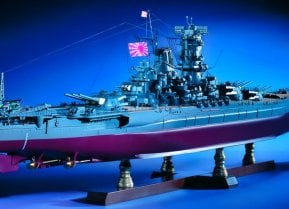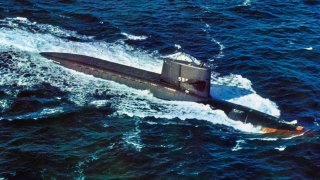USS George Washington: The U.S. Navy's First Ballistic Missile Submarine
The USS George Washington (SSBN-598) marked a pivotal advancement in naval capabilities as the U.S. Navy's first ballistic missile submarine launched in the late 1950s
Summary: The USS George Washington (SSBN-598) marked a pivotal advancement in naval capabilities as the U.S. Navy's first ballistic missile submarine launched in the late 1950s. Part of the innovative Skipjack class, it featured a high-speed hull design and was constructed using HY-80 steel. This submarine made history in 1960 by successfully launching the Polaris missile, showcasing its strategic nuclear capabilities. Despite a collision with a Japanese freighter in 1981 and changes in its operational role following the SALT II treaty, USS George Washington demonstrated significant naval prowess until its decommissioning and recycling in 1986.
USS George Washington (SSBN-598): The Submarine That Changed Naval Warfare
Named to honor the commander in chief of the Continental Army and the first president of the United States, USS George Washington (SSBN-598) became the Navy’s first-ever ballistic missile vessel when introduced more than six decades ago.
Initially, she was laid down as the attack submarine USS Scorpion (SSN-589). Ultimately, however, her longer length due to incorporating a ballistic missile section pushed her out of the class.
Another attack submarine under construction received the original hull number and name instead.
Introducing U.S. Navy Submarine USS George Washington SSBN
George Washington’s keel, was laid down at Electric Boat Division of General Dynamics in 1958. She was launched one year later. As mentioned previously, Scorpion became George Washington during her construction phase. Notably, a plaque bearing her original name remained in the submarine’s forward escape hatch while in service.
She measured roughly 381 feet with a beam length of 33 feet and a draught of 29 feet. George Washington displaced 6,055 tons when surfaced and 6,815 tons submerged.
In 1960, George Washington loaded two solid propellant Polaris missiles and successfully launched the first Polaris from a submerged submarine. The UGM-27 Polaris missile was a two-stage, solid-fueled, nuclear-armed, submarine-launched ballistic missile that served the U.S. Navy for nearly twenty years.
When the formidable weapon was launched underwater from a moving platform, it became invulnerable to counterattack. The Polaris eventually formed the backbone of the service’s nuclear force. Down the line, this missile was gradually replaced by more advanced SSBNS, notably the Trident I.
Following a brief stint at Cape Canaveral, Florida, where she successfully launched Polaris missiles, George Washington sailed for Naval Submarine Base New London at New London, Connecticut. Following a decade-long departure from Groton, George Washington returned to South Carolina for refueling, having cruised some 100,000 nautical miles out at sea.
Collision with Nissho Maru
In 1981, a Japanese freighter collided with the George Washington in the East China Sea, causing the cargo ship to sink.
While thirteen of the Japanese ships’ crew members were rescued from rafts, the captain and his first officer were killed. Japanese officials accused the Navy of waiting 36 hours before informing its government or armed forces of the incident.
According to a statement released by the Navy, George Washington and its ballistic missiles/nuclear reactor onboard were undamaged. Survivors disputed the Navy’s account of the incident.
As detailed by The New York Times, “Survivors also said the submarine surfaced briefly after the collision but then submerged a few minutes later. The United States Navy, however, said in its statement that the George Washington surfaced immediately after the collision to offer assistance but that the freighter had disappeared from sight in fog and rain. ''The submarine was unable to observe personnel casualties or damage to the Japanese vessel before it disappeared from view,'' the Navy said.”
Final Deployments
Following the Nissho Maru incident, George Washington returned to Pearl Harbor for her last missile patrol. Her missiles were unloaded in compliance with the SALT II treaty in 1981. George Washington deployed to Pearl Harbor and the Panama Canal in her new role as an attack submarine.
She later participated in the 24th UNITAS exercise, representing the U.S. Navy’s sole submarine. Following these exercises, George Washington escorted John F. Kennedy in a deployment that circumnavigated South America in 1984.
USS George Washington was officially stricken from the Naval Vessel Registry in 1986 and was subsequently disposed of through the Ship-Submarine Recycling Program at Puget Sound Naval Shipyard.
About the Author: Maya Carlin
Maya Carlin, National Security Writer with The National Interest, is an analyst with the Center for Security Policy and a former Anna Sobol Levy Fellow at IDC Herzliya in Israel. She has by-lines in many publications, including The National Interest, Jerusalem Post, and Times of Israel. You can follow her on Twitter: @MayaCarlin.


